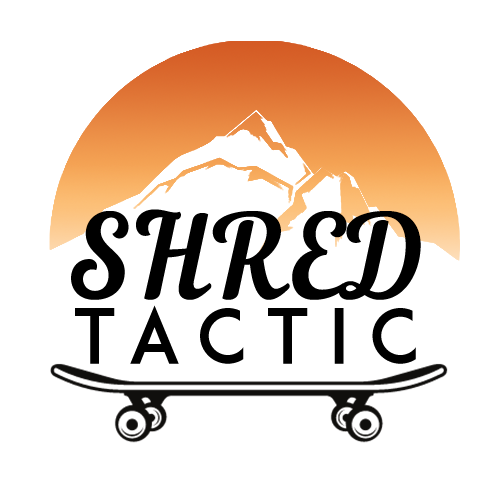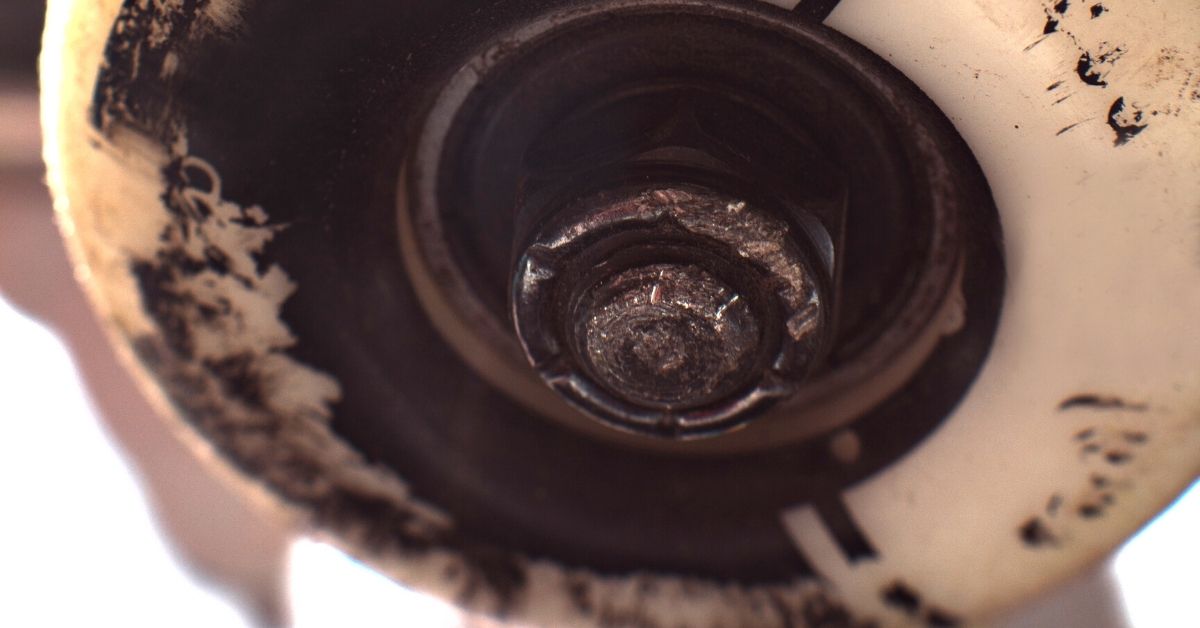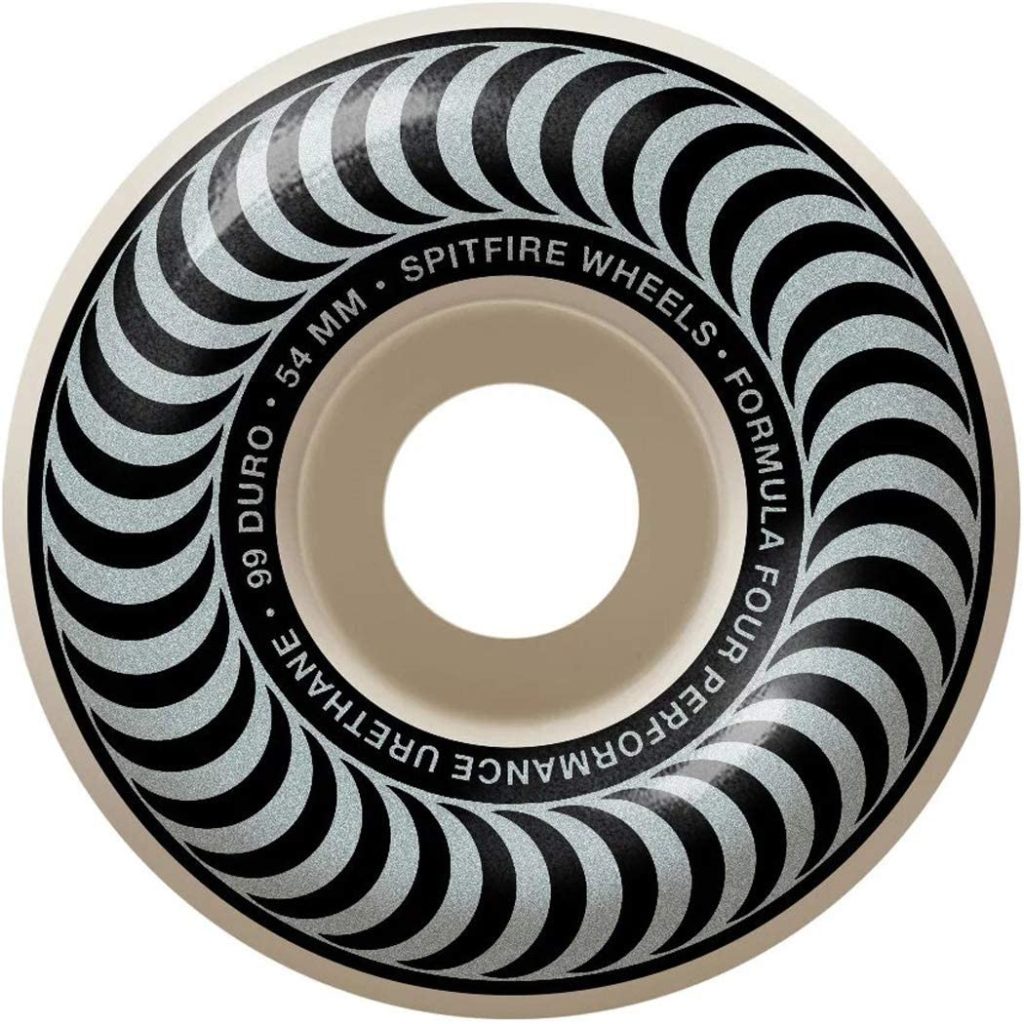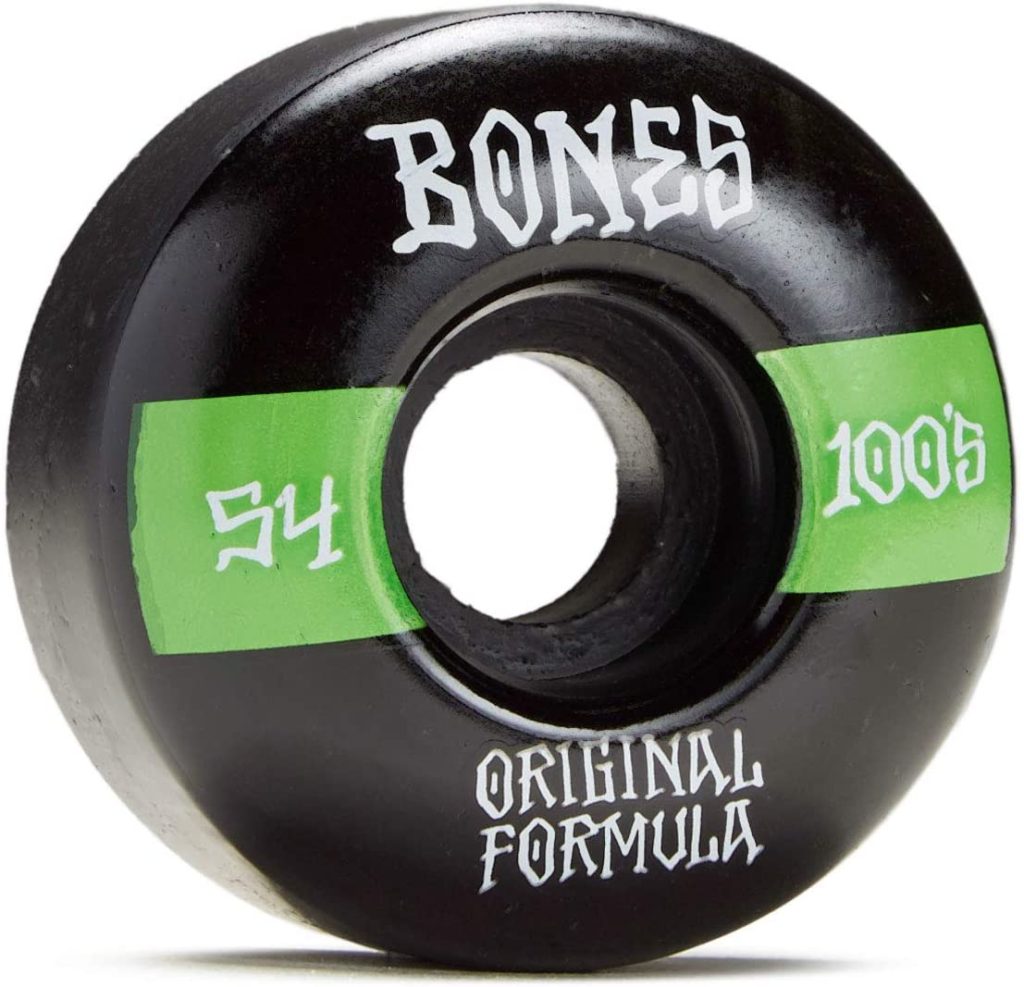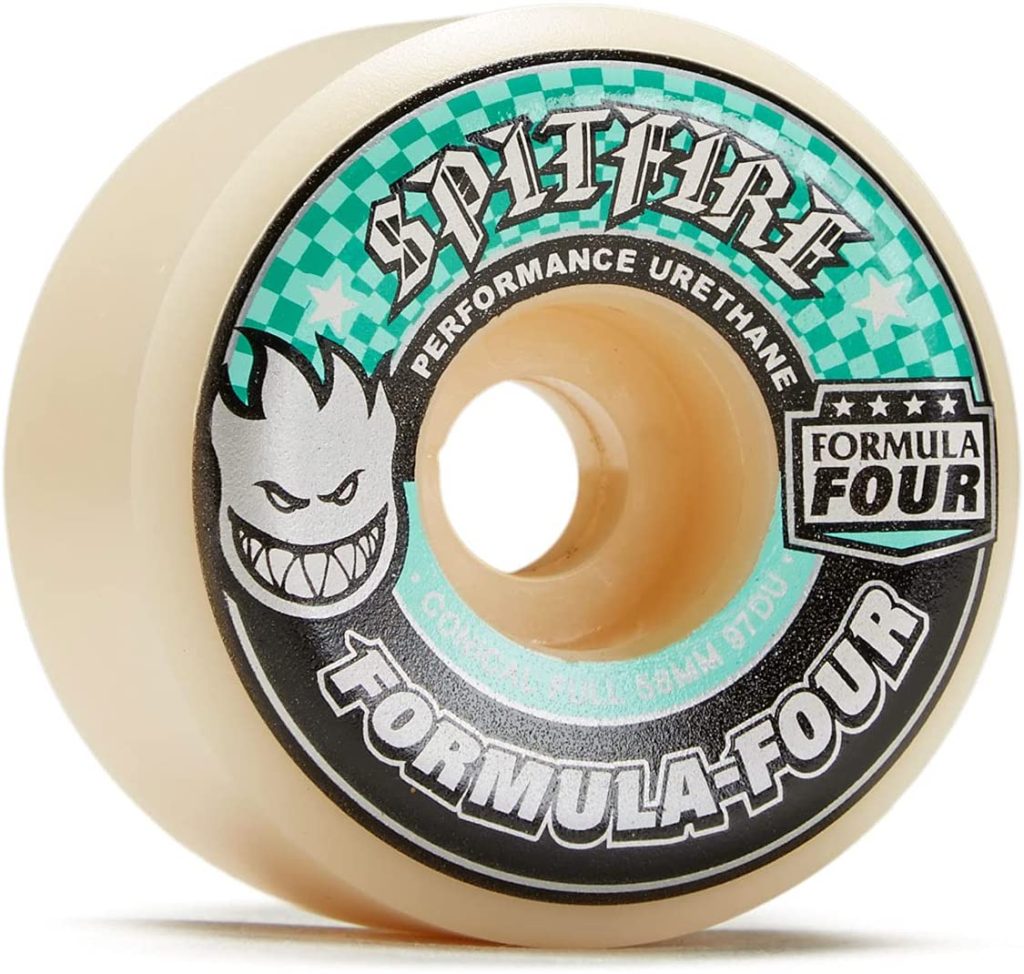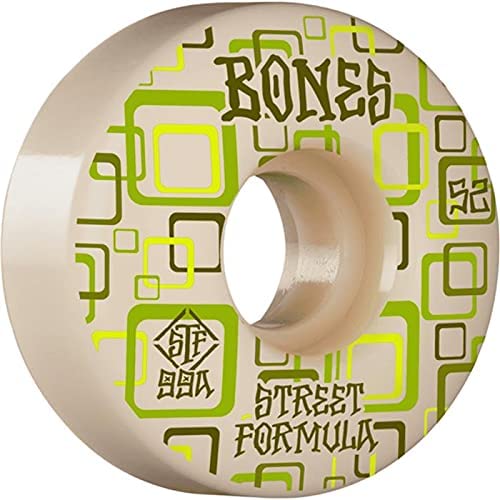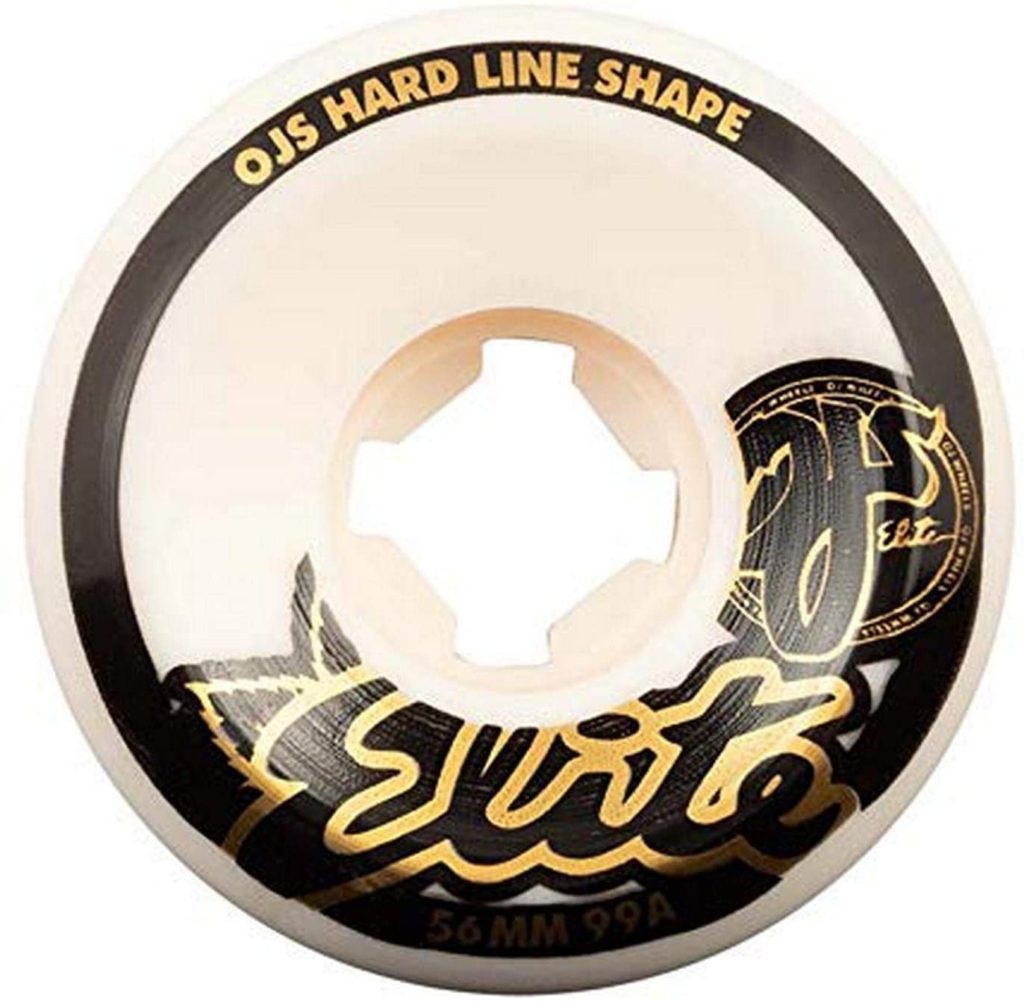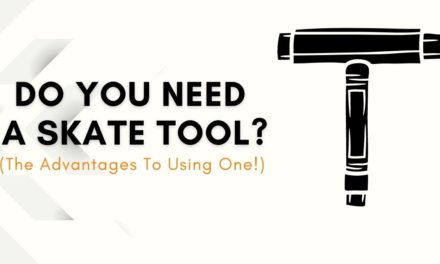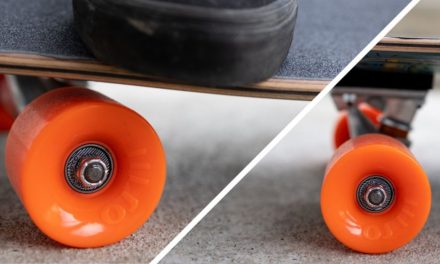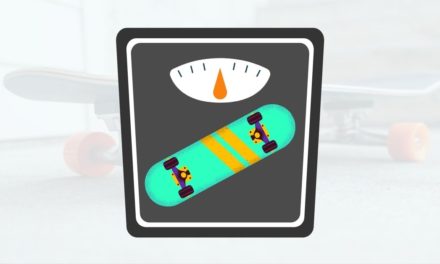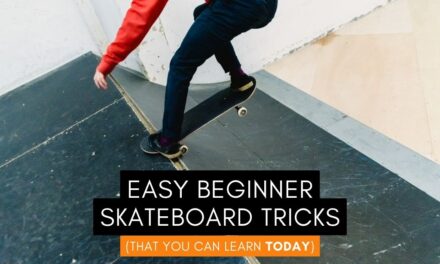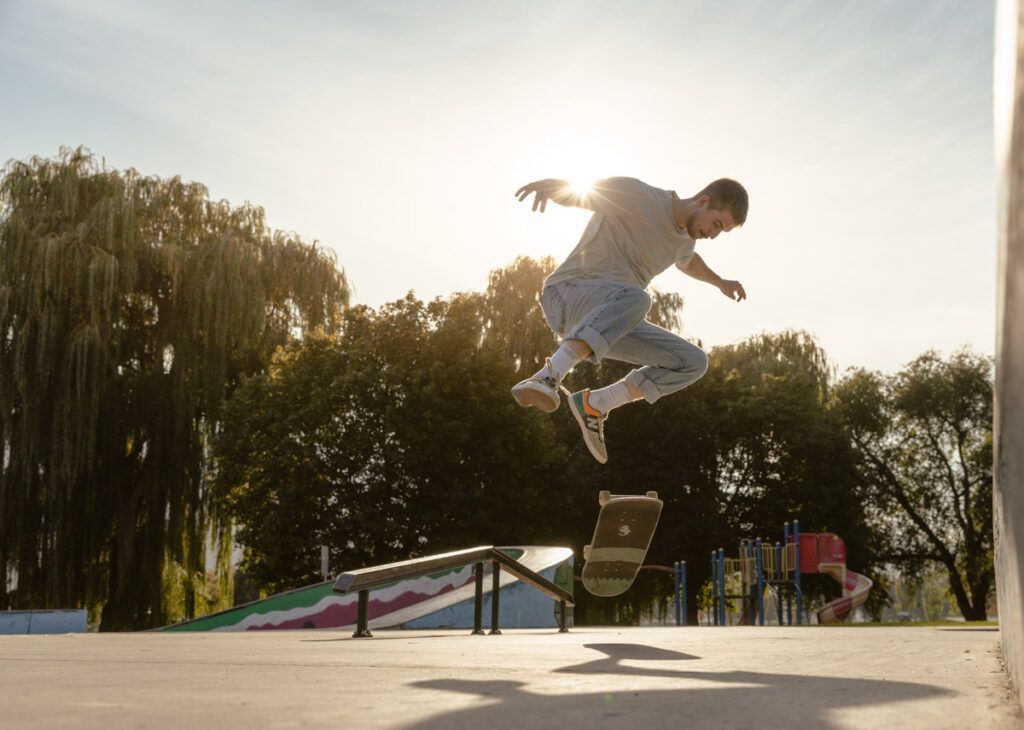If you’re the type of skater who spends most of their time at the skatepark, getting the correct type of wheel will make landing tricks and gaining speed a lot easier. Since skateparks have smooth concrete, you don’t need to worry about excessive vibration transfer through the wheels. Instead, you need something that rolls fast and can pivot easily when landing tricks.
The best type of skateboard wheel for skateparks are ones with a 95a -101a durometer and a 51mm – 55mm wheel diameter. These wheel specs will offer the fastest ride on the smooth concrete found at skateparks while also pivoting easily when landing tricks.
Now, if you’re curious why those factors make for an ideal skatepark wheel, I’ll be breaking that down throughout this post. I’ll also include a few of my favorite skatepark wheels based on personal experience and recommendations from other skaters I know.
So whether you want to feel confident buying your next set of wheels or are looking to grab a new set today, this post has you covered.
Let’s get started!
5 Best Skateboard Wheels For Skateparks
1. Spitfire Formula Four Classics (99a)
Wheel Profile – Medium
Size Options – 51mm – 56mm, 58mm
Color – Assorted Based On Size
Wheel Surface – Smooth
| Size | 51mm | 52mm | 53mm | 54mm | 55mm | 56mm | 58mm |
|---|---|---|---|---|---|---|---|
| Diameter | 51mm | 52mm | 53mm | 54mm | 55mm | 56mm | 58mm |
| Width | 31mm | 32mm | 33mm | 33.5mm | 35mm | 35.3mm | 35.8mm |
| Surface Size | 15mm | 15.5mm | 16mm | 16.5mm | 17.5mm | 17.8mm | 18mm |
The Spitfire Classics are some of the most popular wheels you’ll find at many skateparks, and for good reason. Spitfires use their formula four urethane that is extremely resistant to flat spots and super grippy on tight turns. Unlike other wheels I’ve skated, these always felt great to skate, even after a year of use.
These wheels have a 99a durometer putting them at the harder end of the spectrum. However, spitfire labels them as 99d, which is simply their version of saying the wheel has a 99a durometer.
In terms of skateparks, these wheels roll super fast and keep your momentum going better than softer wheels. At 99a, I find you can still pivot your tricks or bust out a powerslide, but you can still get away with riding these home on some rough cement.
The wheel profile of the classics is medium, which means it strikes a balance between good grip and easy sliding. So if you’re someone who likes to skate a little bit of everything at your local skateboard, including transition, these wheels are a great option to go with.
If you are going for a 55mm, 56mm, or 58mm wheel, it would be worth getting a 1/8″ riser to avoid wheel bite.
2. Bones Classics Original Formula V4 (100a)
| Size | 53mm | 54mm |
|---|---|---|
| Diameter | 53mm | 54mm |
| Width | 34mm | 34mm |
| Riding Surface | 19.5mm | 19.5mm |
Bones have long been one of my favorite skateboard wheels for their durability and grip. This wheel is a bit harder than the first option with a 100a durometer, making it slide easier than a softer durometer wheel. Made with the SBA Formula, these wheels are very hard and keep your speed up while rolling around the skatepark.
A nice feature of these wheels is the larger contact patch (aka riding surface). This makes the wheels have more grip despite having a higher durometer. Since more of the wheel is on the ground, there’s more friction keeping it in place. So if you’re coming in hot for a trick, you don’t need to worry about washing out.
With those features in mind, this wheel is a great all-around option for skateparks and works very well for carving bowls.
3. Spitfire Formula Four Conical (97a)
Wheel Profile – Wide
Size Options – 52mm, 53mm, 54mm, 58mm
Color – Teal, Red, or Blue
Wheel Surface – Smooth
| Size | 52mm | 53mm | 54mm | 58mm |
|---|---|---|---|---|
| Diameter | 52mm | 53mm | 54mm | 58mm |
| Width | 32.5mm | 33.5mm | 34mm | 37mm |
| Riding Surface | 21mm | 21.5mm | 22mm | 27.3mm |
The Spitfire Formula Four Conical Wheels are another classic that is perfect for riding skateparks. The difference from the first Spitfire wheel I mentioned is that it’s softer, making it ideal for skating at the park, then riding some rough pavement back home. Since it has a 97a durometer, it’s noticeably softer than other wheels on the list and helps reduce vibrations on rough surfaces. Better yet, you can roll over small rocks and not have your board eject you without warning, a big downside to harder wheels.
Like most Spitfire wheels, these are made with their famous Formula Four Urethane that is resistant to flat spots and has some seriously good grip compared to other wheels.
Since this is a softer wheel, this may not be ideal if you want to powerslide a lot or pivot your tricks with some extra steez. The added bit of traction along with the wider wheel profile makes this one a bit harder to slide on. However, for the same reason more advanced skaters may not like this wheel; intermediate or beginner skaters will love the added security this wheel offers.
4. Bones STF V3 Slims (99a)
| Size | 54mm |
|---|---|
| Diameter | 54mm |
| Width | 30mm |
| Riding Surface | 16mm |
The Bones STF V3’s are the most narrow wheel on the list, but with a 99a durometer, it’s another great option for more tech park skaters. With a much narrower contact patch, this wheel will pivot out of tricks like butter. Something that would take a lot more effort on a wider wheel. If you love skating flat ground at the skatepark, these wheels would be a solid option, especially being lighter weight.
Like the other set of Bones on this list, this wheel is made with their Street Tech Formula (STF) to make these wheels longer lasting and less prone to flat spots.
It’s worth mentioning that these wheels won’t be a great fit for beginner or intermediate skaters. These wheels will slide out easier than wider wheels and feel slicker at high speeds. However, these are prime-time wheels to go with for advanced technical skaters.
5. OJ Elite Hardline (99a)
| Size | 53mm | 54mm | 55mm | 56mm | 58mm |
|---|---|---|---|---|---|
| Diameter | 53mm | 54mm | 55mm | 56mm | 58mm |
| Width | 33.6mm | 34.3mm | 34.8mm | 35.6mm | 36mm |
| Riding Surface | 23mm | 23.4mm | 23mm | 23.7mm | 23.8mm |
I’ve long been a bit of a grumpy troll about which brand of wheels I use. I’ve always liked skating Bones and Spitfire the most simply because they’ve been better than other wheels I’ve tried. That all changed when I slapped on a pair of these OJ Elites and was pleasantly surprised by how nice they felt while riding all my local skateparks.
First and foremost, these wheels have a wide conical shape meaning the contact patch is massive. As someone who loves skating transition as much as I do street, these wheels were a dream. They may not be great for pivoting tricks, but how they carry speed and how smooth they are to ride makes up for it.
Compared to others on the list, a unique feature of these wheels is the stone ground wheel surface. That means these wheels feel broken in right out of the box, unlike other wheels that feel a bit slippery at first.
These are an excellent wheel for any level of skater, but especially those who prefer skating transition at the skatepark and going as fast as possible.
What Skateboard Wheels Are Best For Skateparks?
After going through these recommended wheels, you may be left wondering what actually makes a wheel “good” for skateparks. You need to first consider what type of ground the skatepark has to answer that.
Most skateparks have smooth concrete, sometimes with a laminated finish. Compared to a standard patch of road concrete or the sidewalk, it’s a whole heck of a lot smoother. What that means for wheel choice is that you don’t need to worry about hitting rocks or vibrations as much as you would street skating. Since the concrete is smooth, a harder wheel will move the fastest on this type of ground.
Next, you have to consider what types of things you’ll be skating at the skatepark. Unlike street skating, skateparks usually have a little bit of everything. Ledges, rails, stairs, banks, bowls, and other transition. That means you need a wheel that can pretty much do it all, whether you’re pivoting a trick in a game of SKATE or ripping at warp speed through the bowl.
To get the best of both worlds in this case, a medium wheel profile will give you the best all-around performance—something like the Spitfire Classics, for example.
With that said, a wider wheel with a harder durometer can give you a similar feeling to a medium width of wheel but tends to feel better when skating fast.
So, in short, the best wheels for skateparks are harder wheels (higher durometer) with a medium wheel profile for the best all-around performance.
What Wheel Size Is Best For Skateparks?
The ideal wheel size for skateparks is between 51mm and 53mm. These diameters are best for all-around skating and technical tricks, ideal for skating ledges, rails, and transition. If you focus more on transition while at the skatepark, opt for a 53mm – 56mm wheel instead for faster speeds.
For more advanced tricks, smaller wheels perform better since they slide easier, are less prone to wheel bite, and are lighter weight. However, the downside to small wheels is that they don’t pick up or hold speed very well. So when skating transition, smaller wheels can be a bit of a pain.
Now for more beginner skaters, a larger wheel with a bigger contact patch can help you to feel more secure on your board. Larger wheels tend to have better grip simply because they are wider. When taking sharp turns, it’s far less likely for your wheels to slide out, helping boost your confidence faster.
I’ve always gone with 53mm as my standard wheel size since it’s big enough to enjoy skating bowl with but small enough for techy tricks. Since your wheels will eventually wear down over time, a 53mm also gives you enough wheel to wear through without it getting too small.
Understanding Wheel Durometer
Throughout this post, I mentioned wheel durometer quite a bit, which is a term that most people get confused with. So let’s break down what wheel durometer is and which one is best for skatepark terrain.
Wheel durometer measures the hardness of a wheel on a 100-point scale, known as the A scale. The higher the rating on this scale, the harder the wheel will be. For example, a 73a durometer is far softer than a 100a durometer.
With that said, some brands choose to use the B scale instead to measure the durometer. This version measures 20 points less than the equivalent A scale. So, for example, a 79b wheel is the same as a 99a wheel in hardness.
The reason for these different wheel hardnesses is to cater to different skating surfaces. Street skating on rough concrete makes softer wheels more ideal for helping reduce how much vibration you feel. Meanwhile, skateparks have extremely smooth concrete, meaning harder wheels will perform better here, with faster speeds to match.
If you aren’t sure which wheel durometer to get for a skatepark, start with a 99a wheel. This is the most common wheel hardness and is a good starting point for all ability levels.
After you get some experience with this wheel durometer, you’ll know whether you want something harder or softer. In that case, you can switch up your wheels down the line, opting for something softer with more grip or something extremely hard like 104a to make pivoting tricks easier.
So with all this in mind, you now can get set up with some seriously kick-butt wheels for skateparks. The wheels recommended here are ones that I think are awesome from experience, but you can feel free to disagree. After all, skating is a pretty subjective sport.
Luckily, just using the tips explained throughout this post, you’ll be able to find a new set of skateboard wheels more confidently. Just remember to get the right wheel durometer and size!
Happy Shredding,
– Brendan 🙂
